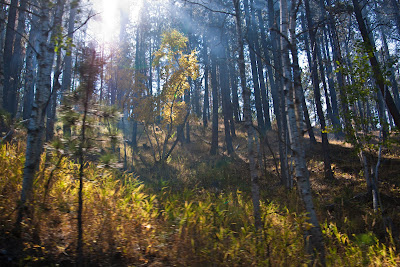Saturday dawned clear and cool, but quickly warmed up to shirt-sleeve weather. We joined RVing buddies Dale Bruss, Mike & Pat McFall and Rollie & Gina Thurston to take in the Buffalo Roundup Arts Festival in Custer State Park.
There were a number of vendors of various arts and crafts, food concessions and an entertainment tent.
We also talked with Ken Marso from Spearfish, SD. He makes "Ken's Canes," (walking sticks and canes) from diamond willow branches. They are beautiful, as you can see. John and I kept his card so that we can get in touch when and if we ever need one.
Many of the artists do outstanding work. One, however, stands out for me. This gentlemen, Wilson C. Hunt, of Chesapeake, VA, was actually working inside one of the park stores. He said he comes and works in the park every summer, and carves the most amazing fish. They are carved from black gum wood, which is very light. Some of of his completed carvings are shown here. He said it takes an average of three weeks to complete each one, including the carving, painting, and finishing.



















































